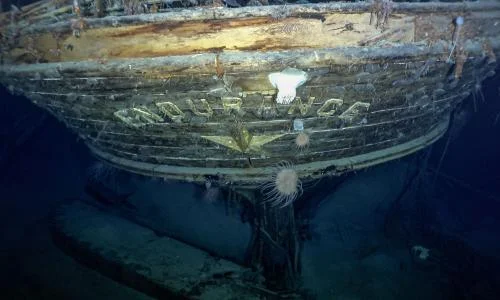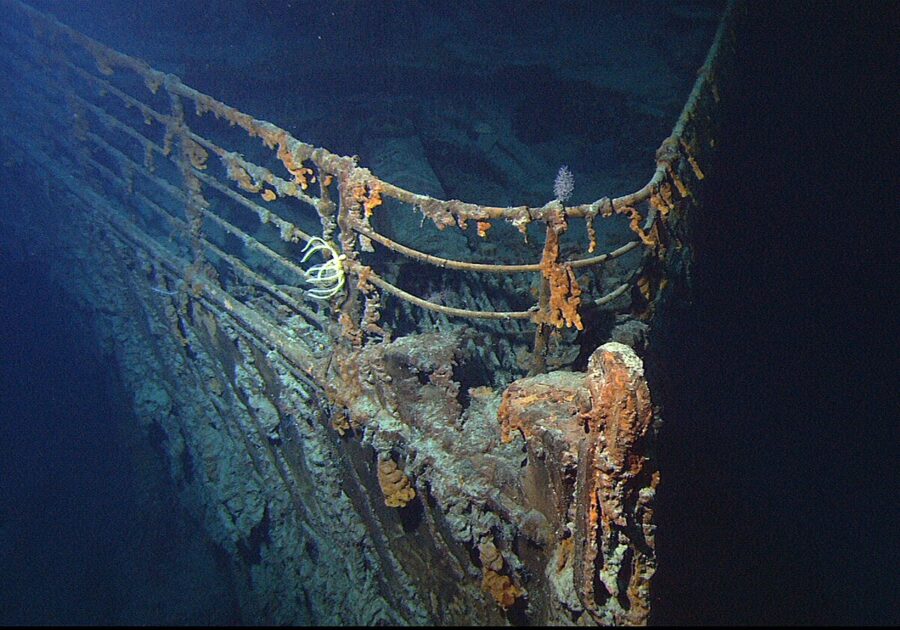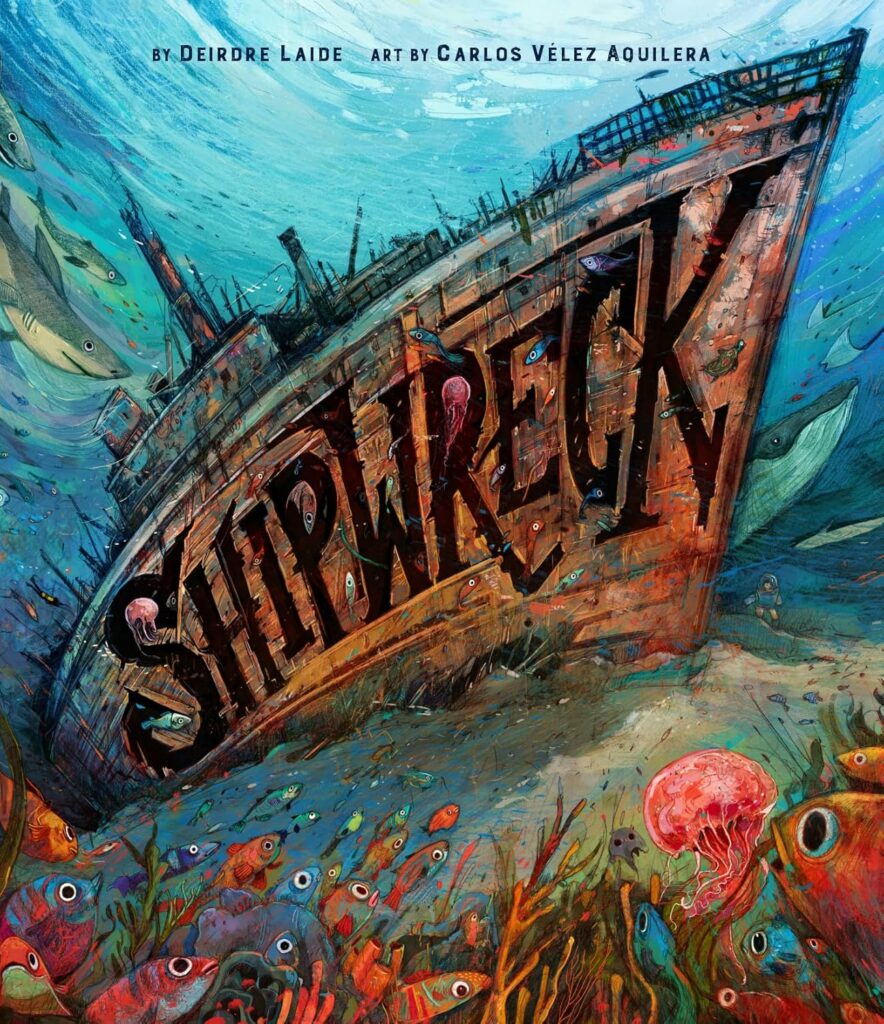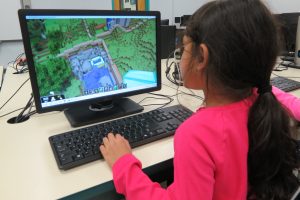GUEST BLOGGER DEIRDRE LAIDE
SHIPWRECK is a lyrical nonfiction picture book for children aged 7 to 10 years old. Dive below the surface and explore famous and infamous shipwrecks along with the intrepid scientists, divers, and treasure hunters who found the ships’ final resting places. From the Titanic to Shackleton’s Endurance, this lyrical story illuminates the tragedies that brought these ships down as well as the scientific techniques, dedicated scientists, and lucky breaks that ultimately led to their discoveries. Sidebars filled with facts and robust backmatter make this book perfect for curious, adventurous readers.
Try these activities that link this STEM book to your language arts program:
Pre-Reading exercises
- Ask students to imagine that they are divers, exploring in the ocean. They come upon a shipwreck. Ask them to describe the scene (jot down words, adjectives, verbs, discuss in pairs, create a word web).
- Now, ask students to imagine they are a passenger/sailor/pirate/crew on a ship. They should describe their fears and worries as their ship approaches an imposing iceberg or a raging storm.
Teacher guided pre-reading vocabulary activity
Introduce and discuss key terms and vocabulary (e.g., sonar, submersible, expedition, wreckage, archaeologist).
The use of lyrical language in STEM will excite your students’ senses and ignite their imagination. In my book SHIPWRECK, I combined compelling facts with poetic literary devices, vivid vocabulary, and inviting questioning to engage students.
As you read aloud to your students, help them recognise these features:
Listen for repeated sounds
Alliteration occurs when two or more words that start with the same sound are used repeatedly in a phrase or a sentence.
Example:
There it lay resting
off the coast of Cape Cod for…
…an underwater explorer
who followed a cartographer’s clues,
sought and searched,
and discovered
the ill-gotten treasures
of the Prince of Pirates.
Task: Ask your student to jot down other examples of alliteration from the book as you read aloud. There are so many. Enjoy!
Listen for figurative language
Lyrical language enhances communication of facts by making the words more vivid, descriptive, and impactful. Using descriptive language, students will be able to picture a shipwreck. Metaphors are examples of figurative language. They compare two things, but without the words LIKE or AS (similes). Metaphors are used when the qualities of one thing are figuratively carried over to another.
Example:
It settled
on the shifting sands
towering tall
into the skies,
a sleeping skeleton
breathing salty air
into a rusting ribcage.
Task: Create your own metaphor to describe a shipwreck.
Listen for onomatopoeia
Onomatopoeia the process of creating a word that resembles or imitates the sound that it describes. In my book SHIPWRECK, I used an onomatopoeic word in the spread about the RMS Lusitania to create a dramatic effect.
Example:
Peering from his periscope,
the U-Boat captain
launched a torpedo
and watched it
swiftly streak and
BOOM
into the liner
with a mighty blast.
Task: Ask your students to create their own engaging example of onomatopoeia about shipwrecks. Select a shipwreck from the book. Change the words or write a new piece to include an onomatopoeic word.
Identify the use of inviting questioning
Reading Shipwreck is an immersive experience. My aim is to take students on a deep dive beneath the surface and discover the shipwrecks alongside the intrepid explorers who discovered them. I used questioning to captivate students’ attention and foster critical thinking.
Example:
Will you find a lost ship?
Where does pirate treasure hide?
Task: Students form working groups of two or more. Students create a bank of questions about the shipwrecks and aspects of the book that interest them most. They can share/present these questions to other groups.

After-reading creative project options about shipwrecks (choose one or more)
- Oral language activity – Interview the sole survivor from a tragic shipwreck.
- Write a news report announcing the discovery of a shipwreck. Include the elements of report writing-introduction, 5 W’s (Who? What? When? Where? Why?), conclusion. Present project to the class.
- Dramatise a scene (e.g. A ship facing impending doom, a diver making a shipwreck discovery, a scientist using sonar technologies to discover a shipwreck, a news reporter detailing a discovery.)
- Write a journal entry from the point of view of a diver or scientist.
- Art extension lesson – Create a mini-exhibit poster for a museum showcasing shipwreck artifacts.
- Create an underwater diorama scene of a shipwreck.
Have fun and be creative!
Featured image credit: View of the bow of the RMS Titanic photographed in June 2004 by the ROV Hercules during an expedition returning to the shipwreck of the Titanic. Source: http://www.gc.noaa.gov/gcil_titanic.html
Deirdre Laide is a primary school teacher and author for children living on the southwest coast of Ireland. Passionate about nature, conservation, and the lesser-known aspects of history, she aims to bring curiosity and wonder to young readers through storytelling. Her debut title SHIPWRECK (Tilbury House Publishers, 2025) is a lyrical nonfiction picture book exploring shipwrecks around the world and the intrepid scientists, divers, and treasure hunters who found the ships’ final resting places. Deirdre is represented by Tracy Marchini at Bookends Literary Agency. Website: www.deirdrelaide.com Instagram: deirdrelaide_books Bluesky: deirdrelaide.bluesky.social












Leave a Reply
Your email is safe with me.